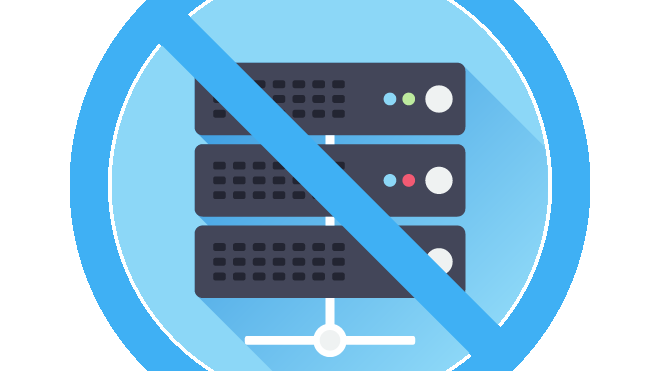Serverless is all about the re-engineering of public cloud services; with no provisions or servers to manage as its main attribute. And it doesn’t end there – the possibilities of serverless are infinite, as it’s now also being used for edge computing.

Serverless cloud computing was first developed in 2015 as a framework for building applications on AWS Lambda – a platform created by Amazon Web Services. Today, it is deployed across a wider range of providers, including Google Cloud, Microsoft Azure, Oracle Cloud, and IBM.
“Nothing that would be bare metal, nothing that’s virtual, nothing that’s a container – anything that involves managing a host, patching a host, or dealing on an operating system level, is not something you should have to do in the serverless world.” – explains Chris Munns, senior developer advocate for serverless at Amazon Web Services.
And really, serverless is amazing at leveraging the full potential of cloud infrastructure, by eliminating any need for configurations, manual scaling, or hardware. With it, cloud providers are taking on all responsibilities of infrastructure management and operation, while businesses can fully focus on delivering their applications.
What’s interesting is that cloud providers offer serverless to their users within a Function as a Service model. FaaS runs every invoked code on a server that is provisioned, optimized, and patched with all updates.
On the whole, serverless offers the true promise of the cloud – faster delivery and unlimited capacity, which is perhaps why this model is often referred to as the future of cloud computing.
In this post, we will be looking into various benefits and advantages this model offers, as well as the reasons why serverless is so important in cloud development today.
Savings and Time Efficiency
Serverless computing is basically outsourcing – databases, application logic, and other components are fully managed by the provider, leaving the user worry-free. One of the greatest advantages of such a model is the fact that users only pay for the amount of computing they utilize. Developers can easily test and market their applications at a higher speed than with other models. This significantly saves users costs and promotes time efficiency – in the long term.
Smoother Task Execution Process
Users are no longer to worry about over or under-provisioning. For instance, with AWS Lambda, once the function code is delivered, it is executed on the basis of on-demand by the platform, without any frets about resource allocation.
With the traditional cloud infrastructure, end-users usually have to build software to manage their systems. It is their responsibility to optimize instances and detect any VMs that are running without a purpose. But with serverless, these tasks are gone; as users write code in functions, the sophisticated systems act on the functions when triggering events occur. This way, the task execution process is simplified to the maximum, taking the heavy load off of the users’ shoulders.
Better Applications with IoT
It is a known fact that real-time responses are required for IoT systems to work seamlessly. Serverless computing perfectly copes with this task.
With the implementation of Lambda, functions are executed on IoT devices through specific platforms. For instance, if a wireless home security camera system runs with serverless functions, every detected motion will be recorded and sent to a database. What’s fascinating about this is that the need for a VM to idle for the whole day is completely eliminated; with serverless, the code will be executed only when it is triggered by an event – a detected motion in this case.
Serverless computing tremendously helps developers, product owners, and DevOps teams, by offering these users an innovative approach to architecting and building their cloud applications.
With serverless, if you’re a developer, you can just focus on writing and deploying your applications, without ever having to think about provisioning, as the serverless model service does this job for you.
If you’re a product owner, you can stay assured that with serverless, you only have to pay for the resources when they are actually utilized, not when they are provisioned. This can potentially result in huge savings for your business in the long term, as the need to pay for any idle resources is naturally eliminated.
And if you’re DevOps, serverless computing can provide you with the luxury of a completely worry-free administration, with no patching or downtime, no provisioning of resources, and no handling of surges of traffic. With serverless, DevOps can be fully compliant, while their counterparts at other enterprises that are using traditional cloud infrastructure will find themselves busy with all these tedious tasks.
CONCLUSION
Many argue that the future state of cloud computing will eventually be serverless. Even today, organizations that adopt serverless models see increased agility, significant savings, and other great benefits. If you’re planning your move to the cloud, it might be a good idea to explore the vast opportunities serverless computing might offer to your business.
Of course, even serverless has its drawbacks. Because this technology, as well as the market for it, is somewhat still new, there are not enough adequate tools for the effective management of the function groups.
There is definitely a learning curve and so much to be worked on; therefore serverless might not be the optimal choice for some businesses at this point.
Regardless of these limitations, the possibilities of this model are endless. We’re likely to see great trends ahead!
Are you interested in finding more about how you could leverage your enterprise with cloud computing? Perhaps you’re planning for your cloud move?
Clouve provides just the right tools and support to help you and your team during this journey. Our platform allows your team to resolve the most complex tasks effectively and efficiently. We provide sophisticated automation tools, complete coverage from A to Z, and reliable support so that our clients can focus on things that matter most – their high-value applications.
Talk to us today to find out how we can help you.





